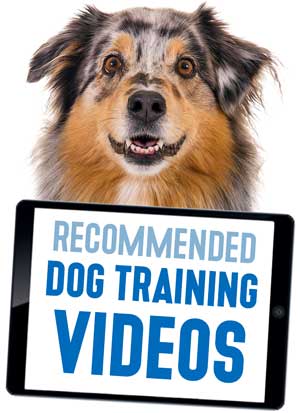
How to Treat Dog Bites
It's not hard to learn how to treat dog bites. Pet owners are wise to understand the basics of first aid. Cat bites are actually more likely to become infected, but infection can occur in any injury that breaks the skin. Even scratches can become infected. So, your main goal is to prevent infection.
Dogs' mouths are full of bacteria. There are bacteria naturally present on human skin, no matter how clean we try to be.
The first step in how to treat dog bites is to clean the injury. You can use an antibacterial soap if one is available. Tea tree oil and manuka honey cleansers have natural antibacterial activity.
Many people are concerned about the effects of synthetic antibacterial agents on the environment. As a result, they try not to keep cleansers containing triclosan or other chemical antiseptics in the house.

Garry Smith
This is Eric. He loves agility and shouts at me all the way round! Here he is sitting looking cute. A stunning lad!
If you are concerned about the environmental effect, but you have dogs, check out the many natural antibacterial and antiseptic agents. Choose to keep one of those around for just such an emergency.
When the skin is broken, bacteria from any source can enter the bloodstream. Washing the area with an antibacterial soap will kill some of the bacteria, before they have a chance to enter the bloodstream.
Warm water should be used for dog bite care. If running water is available, rinse the area thoroughly with warm running water. The water will help to rinse away viruses and other pathogens resistant to the antibacterial soap.
Use a clean towel to dry the wound and surrounding area. If white is not available, choose a light color. Dyes can cause irritation and allergic reactions if they enter the bloodstream.
Pat the area dry. Avoid rubbing or other actions that could cause material to become lodged in the wound.
If the wound is still bleeding, you will use the towel to apply pressure. Applying pressure to stop bleeding is one of the important parts of how to treat dog bites.
If there is heavy bleeding, the patient should keep the wound elevated. If the wound is on a hand or the arm, try to keep it raised above the head to slow bleeding and to reduce swelling.
If the wound is on a foot or leg, the appropriate dog bite care is to elevate the wound to a point above the heart. That can be accomplished by having the patient lie down and using pillows to elevate the wound.
Whenever there is squirting blood, you will need to seek professional care. Perform the first aid as you normally would, then head to the local emergency room, an urgent care facility or your family doctor.
Knowing How To Treat Dog Bites Will Serve You Well In An Emergency
Another important factor to remember in how to treat dog bites is that there are many small arteries in the hands and feet. While bleeding to death is unlikely, stitches are often necessary to stop the bleeding.
The arteries may need to be repaired in order to prevent nerve damage from lack of blood. If the wound is closed, but the artery is not repaired, blood and fluids can pool beneath the skin. Emergency treatment is necessary to avoid those problems.
Your doctor will advise you about any follow-up dog bite care. The usual requirements are changing the bandage twice daily and applying a topical antibiotic ointment. As is the case with the antibacterial cleansers, there are topical ointments containing manuka or other natural ingredients that can be used.
Bites in some locations are more difficult to treat. For example, a bite to the hip can be cleaned and bandaged, but elevating the area is generally impossible. It may be necessary to seek professional help even if bleeding is not severe to reduce the risk of infection.
Those are the basics of how to treat dog bites. It's always best to be prepared for emergencies.
Have Dog Training Questions?
Check out these introductory dog training videos...
I want my dog to stop being aggressive.
I want some help training my new puppy.
I want my dog to stop barking at everything.
Get Australian Shepherd Info, Website Updates, Special Offers, and Cartoons...
FREE GIFT
You'll also receive a free copy of the ebook
My Everyday Dog Training Tools
by professional dog trainer Daniel Abdelnoor, "Doggy Dan"











